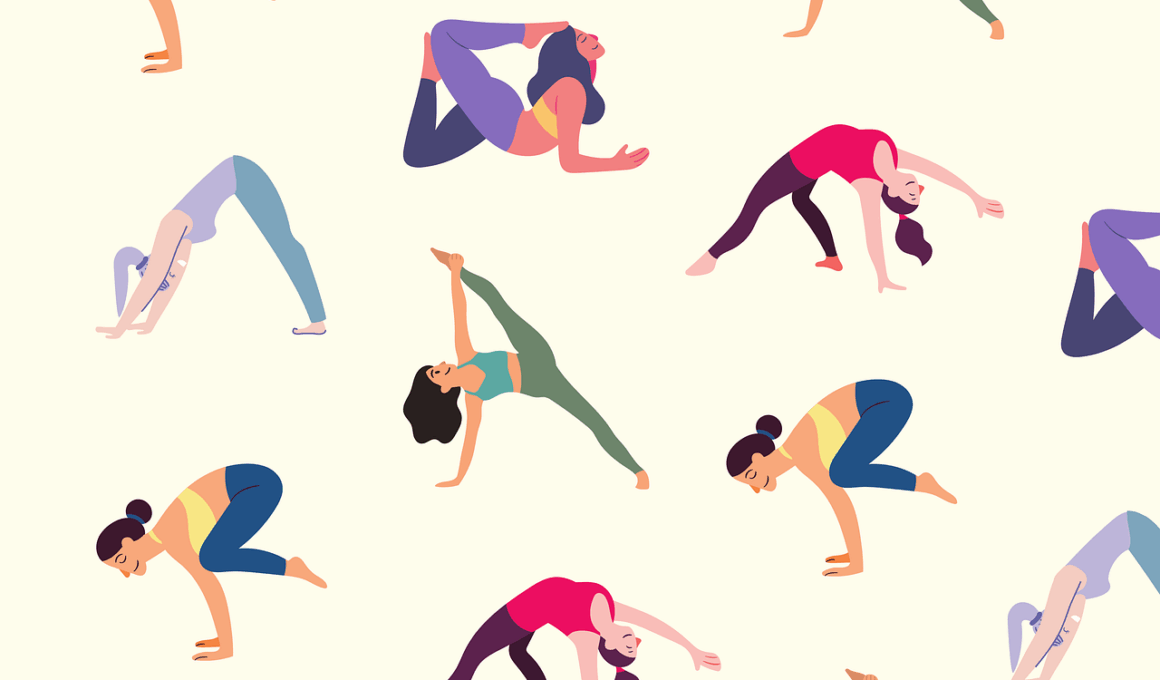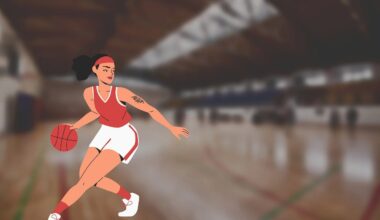Biomechanical Analysis of Pilates Movements
The biomechanical analysis of Pilates movements provides essential insights into how different exercises affect the body. One key principle to examine is the alignment of the spine during Pilates practice. Maintaining proper spinal alignment not only improves posture but also reduces strain on the muscles and joints. Numerous studies have explored how specific movements, such as the reformer leg presses and the hundred, activate various muscle groups. By focusing on controlled movement, individuals can enhance their core stability, which is vital for performing more complex exercises safely. Understanding these mechanics can help practitioners adjust their technique and prevent injury. Additionally, the role of breath in Pilates cannot be overstated, as it significantly influences movement quality and muscle engagement. The depth and timing of breath support the precision of each exercise, creating a synchronized flow. By analyzing the biomechanics of Pilates, practitioners gain a deeper appreciation for these elements, ultimately leading to more effective workouts. Furthermore, research continues to define the impact of Pilates on overall health, including flexibility and strength improvements, making it a popular choice among fitness enthusiasts.
In exploring the biomechanics of Pilates, certain movements stand out due to their unique impacts on muscle engagement. For instance, exercises like the Swan and Teaser require significant core activation and proper spinal extension. The Swan enhances the mobility of the spine while emphasizing the posterior chain, which consists of key muscle groups supporting good posture. Pilates instructors often focus on cueing practitioners to maintain their neutral spine while performing these exercises. Additionally, the use of resistance through apparatus such as the reformer, barrel, or stability ball challenges the body differently than traditional gym workouts. The adaptation of resistance levels is crucial in implementing progressive overload, ultimately benefiting muscle strength and endurance. Studies show that when practiced consistently, Pilates can enhance athletic performance, particularly in sports requiring agility and balance. Understanding the muscle dynamics involved can also guide modifications for beginners and individuals recovering from injuries. The emphasis on controlled resistance and precise movement patterns in Pilates allows individuals to customize their workouts according to their physical limitations and goals. As research progresses, it is becoming increasingly clear that Pilates not only benefits fitness enthusiasts but also contributes to rehabilitative practices around the world.
Muscle Activation Patterns
A critical aspect of any biomechanical analysis is understanding muscle activation patterns during Pilates movements. Research illustrates that varying exercises stimulate different muscles, impacting overall effectiveness. For example, exercises like the Roll Up and the Shoulder Bridge specifically target the abdominal muscles, promoting core stability. Studies have employed surface electromyography to measure muscle activation in participants. This technology captures real-time data about which muscle groups are most engaged during specific movements. Insights gained from such analyses inform best practices for instructors and practitioners alike. Ensuring that individuals engage the correct muscles not only enhances workout efficiency but also ensures safety during practice. For instance, awareness of which muscles should be active during leg lifts can help prevent injuries commonly associated with overexertion. Furthermore, a detailed understanding of muscle function can aid rehabilitation, allowing therapists to tailor programs effectively. Research continues to reveal how Pilates can be utilized in diverse populations, from athletes to seniors, highlighting its versatility in improving physical mechanics. This adaptability is part of what makes Pilates an integral component of many fitness regimes.
The methodology of studying biomechanics within Pilates movements often utilizes observational studies and controlled trials. Research typically focuses on specific populations, allowing for targeted insights into effectiveness across groups. For example, elite athletes may exhibit different muscle engagement patterns compared to beginners due to their varying levels of strength and flexibility. Conducting studies with diverse participants helps in understanding how Pilates can serve different demographics. Clinicians and trainers frequently refer to these findings to optimize workout plans, ensuring clients are trained according to their unique needs. Additionally, the concept of proprioception often comes into play during these studies, examining how awareness of body position affects movement execution. Improved proprioception leads to better performance and fewer injuries. Researchers also examine how Pilates indirectly impacts other forms of exercise. For example, many athletes report that incorporating Pilates into their training routines enhances their overall performance. These insights underscore the need for continued evaluation of Pilates within diverse fitness landscapes. Moreover, as the demand for tailored fitness solutions increases, understanding biomechanics in Pilates becomes increasingly imperative for effective program design.
The Importance of Technique
Technique plays a pivotal role in the effectiveness of Pilates movements, directly influencing outcomes. Proper alignment and execution ensure that individuals derive maximum benefits from their workouts. Deviating from established techniques can result in suboptimal muscle engagement, leading to less effective workouts or even injury. Therefore, professional training for both instructors and practitioners is paramount. Continuing education for instructors can keep them updated on the latest biomechanical research and methods. This ensures that they teach clients safe practices while maximizing exercise benefits. Furthermore, video analysis and technology now play an integral role in assessing and improving technique. Pilates studios frequently employ video feedback to guide clients through movements, allowing for immediate corrections. This reflective practice not only enhances learning but also promotes the development of body awareness, crucial for any physical activity. Comprehensive workshops and seminars focused on biomechanics can significantly increase instructor competence, thereby benefitting practitioners. As practitioners become more educated about proper techniques, they can streamline their workouts for improved results. This cyclic relationship between understanding and application exemplifies the ongoing evolution of Pilates training methods as newer research emerges.
Additionally, the psychological aspect of practicing Pilates cannot be overlooked. The approach to movement is often reflective, requiring mindfulness and concentration. Understanding the biomechanics involved can create a stronger mind-body connection that benefits both physical and mental well-being. This integration is often what attracts individuals to Pilates in the first place. Many practitioners report feeling more centered and focused after classes. Research supports these sentiments, suggesting that regular practice can promote a sense of calm and reduce anxiety levels. Such benefits contribute to why Pilates is frequently incorporated into holistic wellness programs. Furthermore, evidence indicates that the meditative qualities of Pilates enhance muscular awareness during practice. Therefore, individuals are taught to listen to their bodies, making necessary adjustments as needed. Consequently, these psychological facets greatly enhance overall practice, as awareness translates into movement refinement. The mental clarity developed during Pilates encourages individuals to remain proactive in their fitness journeys, fostering sustained commitment to healthy living. As the fitness industry evolves, recognizing and promoting the mind-body connection found in Pilates becomes essential in holistic health discourse.
Future Research Directions
As the field of Pilates research continues to evolve, future directions warrant exploration for deeper insights. Innovative studies focusing on specific populations, such as individuals with chronic conditions, can shed light on the therapeutic potential of Pilates. Furthermore, interdisciplinary research blending kinesiology, physiotherapy, and psychology may provide a multifaceted approach to understanding the benefits of Pilates. This will highlight how adaptability enhances the practice for a wide array of users. Utilizing modern technology, such as motion capture systems, will facilitate more comprehensive biomechanical analyses. This not only deepens understanding of Pilates movements but also supports the development of more effective instructional methods. Collaborations between researchers and seasoned Pilates practitioners are essential for bridging the gap between theoretical knowledge and practical application. Field-testing new techniques in diverse environments will contribute to the body of knowledge supporting Pilates’ effectiveness. Lastly, continuous evaluation of existing literature is crucial to advancing best practices. By remaining engaged with new findings, both practitioners and researchers can contribute to the dynamic landscape of Pilates. This ongoing inquiry ensures that Pilates remains relevant as fitness trends evolve, supporting a broader audience seeking physical wellness.
In conclusion, the biomechanical analysis of Pilates movements is integral to understanding this exercise method’s efficacy. Continuous research contributes to improving techniques and outcomes, enhancing the overall experience. Factors such as muscle activation patterns, technique importance, and psychological benefits are pivotal for practitioners and instructors alike. As Pilates grows in popularity, ongoing studies illuminate its impact on various populations. The adaptability of Pilates speaks to its inclusion in wellness programs, accommodating diverse client needs. Furthermore, as technology advances, implementing such tools in research will yield even more comprehensive insights. This will facilitate informed practices among instructors, reinforcing client safety and health improvement. Understanding and valuing the biomechanics of Pilates enhances its benefits, making it a sought-after practice for many. As research paves the way for development, practitioners can continuously evolve their understanding and application of Pilates. Ongoing discourse in this field ensures that Pilates remains a significant contributor to fitness and rehabilitative practices worldwide. Ultimately, the relationship between biomechanics and Pilates exemplifies a commitment to advancing health through movement.


